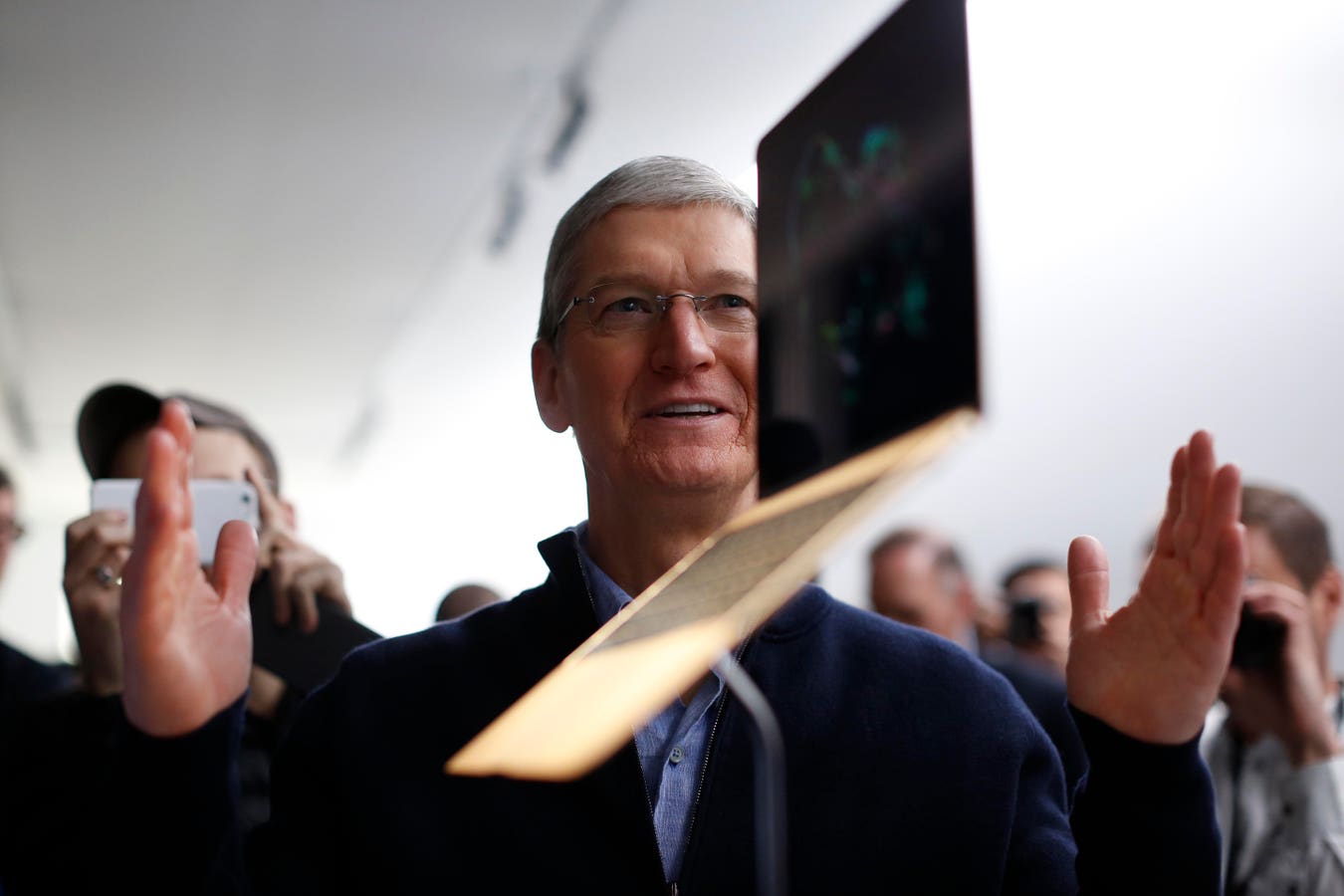Apple CEO Tim Cook stands in front of an MacBook on display after an Apple special event at the … More
Once upon a time, there were the MacBook Pro, the MacBook Air, and the MacBook. The Pro helped everyone needing an overpowered workhorse, the Air helped the fashionistas enjoy a design class and the MacBook was the small and portable laptop for living. Then the MacBook disappeared.
Nearly ten years later, will Tim Cook bring back the smaller and more affordable macOS laptop? The latest leaks suggest it is coming, but with a twist. Why would Apple want to introduce a MacBook running the same A-Series chipsets currently powering the iPhone and the lower-spec iPads rather than the M-Series available throughout the Mac range?
A MacBook Powered By An iPhone
An A-Series MacBook is the intriguing possibility highlighted by MacRumors. The team has identified a new unique identifier in some of the Apple Intelligence code that refers to a Mac17,1, and has confirmed that this corresponds to a MacBook running the A18 Pro chipset.
The M-Series has been present in every Mac released since Apple transitioned to ARM-based Apple Silicon in 2020 and has also made its way into the higher-spec iPad Pro tablets. The A-Series chipsets have not made the jump in the opposite direction. At least, not yet.
The MacBook Advantage
There are several advantages for Tim Cook and his team to introduce the A-Series to the MacBook.
First up would be an opportunity to create a new MacBook line. The current duopoly of the MacBook Air and MacBook Pro has been in place since the launch of the last 12-inch MacBook in 2017. That model offered a smaller display and a reduced price, but was seen as underpowered due to its Intel Core chipset.
That wouldn’t be the case with Apple Silicon. There’s more than enough power in the iPhone Pro and Pro Max models to allow macOS to run smoothly on the hardware.
Then you have the product mix. With the launch of the M-Series chipsets, Apple faced a challenge in differentiating the MacBook Air and the MacBook Pro in terms of performance. Sure, there was a lot of power in the Pro models, but for the average pro-sumer, the MacBook Air was more than sufficient for both day-to-day use, development tools, and multimedia work.
How can you differentiate your Pro model from your consumer model with clear water?
If the MacBook Pro comes with the M-Series chipset, and a MacBook comes with the A-Series chipset, then you have your clear water… A laptop with enough power for daily use, but one that preserves the domain of the MacBook Pro.
Finally, that leaves the interesting question about price. Putting aside the $100 educational discounts and the reduced prices offered in its refurbished store, Apple has been traditionally reluctant to drop below the $999 mark for its laptops, but there is a quiet exception… Walmart continues to sell 2020’s M1-powered MacBook Air for $649. Apple may not sell it directly, but it is authorised and approved by Apple. It also means that Apple has extensive data on the retail potential and customer feedback for a “low-end” laptop.
Replacing The Old MacBook
The M1 Air is five years old and can’t stay on sale forever. And here we have Apple working on a MacBook with a chipset that is relatively low spec for a macOS laptop, but still outperforms the M1; a successful retail pilot on a low spec lower priced MacBook, and looking to expand the portfolio of the MacBook to create more space and bring in more users; and demand for a macOS laptop that can take on the competitive mid-range Windows laptops and Chromebooks.
That’s how you replace the MacBook and bring the faithful with you. You take the M-Series, you make it an A-Series, and you sell it for under $999.
Now read the latest MacBook, iPhone and iPad headlines in Forbes’ weekly Apple news digest…









